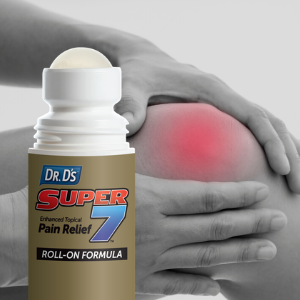
Dr. D’s Super 7: How does it help?
Share
Before science and medicine as we know it today, our ancestors turned to what they had to feel better, which mainly consisted of what they could harvest from herbs and plants.
There are countless effective natural remedies used in Ayurvedic Medicine and Traditional Chinese Medicine that are still used. Fascinating conservative therapies such as Naturopathic Medicine and Homeopathy are prime examples of how ancient natural remedies are incorporated into today’s modern treatments.
Science is catching up to these early formulations, and a lot of what has been done in the past is now being supported by research. For example, turmeric has always been an important part of Ayurvedic medicine. Many remedies for various conditions and ailments incorporated the spice. It was said that inhaling the fumes from burning turmeric would relieve congestion. It was even used as a paste and applied to all types of skin problems from blemishes to smallpox and shingles! Ayurvedic compilations dating back to 250 BC recommends turmeric to help aid with food poisoning. Ayurvedic literature seems to praise turmeric, calling it many different names such as jayanti which means “one who is victorious over diseases.” Today, turmeric has been supported by scientists globally as a powerful anti-inflammatory and antioxidant, giving rise to its therapeutic merit in helping to combat and prevent various conditions such as cardiovascular disease, autoimmune disorders, neurological disease, and many more. Other examples of historical herbal remedies which now have scientific evidence suggesting efficacy include garlic, St. John’s wort and soy (although safety considerations are still a concern).
Natural remedies (and the conservative therapies that prescribe them) are becoming more and more popular as people look for ways outside of drugs and surgery to help themselves feel better and live better. Using natural remedies in conjunction with prescription drugs and western therapies have given many people relief of pain and improved health- even if the science isn’t always clear as to why or how.
At Dr. D’s we pride ourselves in researching the latest effective, natural and safe remedies to deliver superior home healthcare products to help consumers alleviate pain and achieve overall health. One of our first products was Super 7, an enhanced topical pain relief ointment. What’s so special about it is two-fold: the 7 all-natural, powerful ingredients (highlighted in this blog) and the advanced Triple Carrier System which delivers such ingredients to the source of pain (ie. passed the layers of the skin and to the muscles and joints).

Let’s take a look at each ingredient and why it was included in this premium product:
1) ARNICA
Arnica is a yellow-orange flower that looks like a daisy. It is particularly famous for helping treat bruises, but it is also associated with aiding muscle soreness and joint pain and swelling.
2) OIL OF WINTERGREEN
Methyl salicylate is the active ingredient in wintergreen oil, and since it is closely related to aspirin, it possesses analgesic (pain-relieving) and anti-inflammatory properties. It also acts as a counterirritant, meaning that it distracts you from the pain you are feeling in your muscles, joints and nerves.
3) MSM
MSM (which stands for Methylsulfonylmethane) is a chemical produced by humans and animals which helps to decrease joint inflammation and stiffness associated with arthritis, tendinitis, bursitis, and muscle cramps, thereby helping to restore movement.
4) PEPPERMINT
Peppermint has been shown to increase blood flow, which increases delivery of oxygen and nutrients to the injured area to promote healing.
5) EUCALYPTUS
Eucalyptus is a natural analgesic and anti-inflammatory, and particularly helpful in pain associated with neuropathy.
6) MENTHOL
Menthol is not only a counterirritant by providing a pleasant cooling sensation (ie. you feel the cool sensation instead of pain), but it also acts as a muscle relaxant and circulation enhancer.
7) OMEGA-3 OIL
Last by certainly not least, this famous oil is known to reduce joint inflammation and stiffness associated with arthritis, thereby improving mobility.
So, just because something is “natural” doesn’t always mean it’s ineffective or isn’t supported by research. Regardless, it is important to ALWAYS speak to your doctor or pharmacist before trying any home remedy because they can also come with side effects. This is even more important if you take prescription or over-the-counter medications already, because some can change how the drugs work.